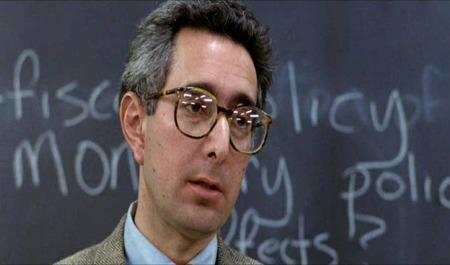Big Presentation? 7 Tips To Help You Take Risks and Wow Your Audience
Published: Oct 07, 2014

Anyone who has ever seen the movie "Ferris Bueller's Day Off" will remember that, while Matthew Broderick played the lead, the show was (almost) stolen by Ben Stein's portrayal of a boring, monotonous, soul-sucking Economics teacher. He delivered his lines ("Bueller? Bueller? Bueller?") as if he had been lobotomized, and his students sat there suffering through his droning, willing themselves to stay awake. (His lecture on the Smoot-Hawley Tarrif Act was particularly dreadful.) Who didn't suffer? Ferris Bueller and his best buddy Cameron Frye, who had both cut school that day!
While you probably – hopefully – aren't as dull as Ben Stein, chances are you tend to play it safe and even boring when making a presentation. If you're like most people, your goal is just to get throughthe pitch or speech; you're not thinking about how to help your audience enjoy it, or even enjoy it yourself. But if you want to shift from simply surviving to coming out on top in the survival of the fittest, most memorable speaker standings, you'll need to mix things up a bit.
It's all scary anyway, right? So why not at least show your audience a good time! And you just mind find that once your audience is nodding and smiling at you, you're having a good time, too.
Here are seven strategies to take your presentations and public speaking to the next level:
Create a compelling opening
"Hello, my name is _________ and I am so happy to be here today" IS an opening, but not a memorable one. If you really want to capture your audience's attention, start with a story, a statistic, a piece of pop culture—something that gets your listeners hooked right away. Remember: you only have once chance to make a powerful first impression.
Add humor appropriately
There are few worse ways to damage your credibility than with a joke gone horribly wrong in front of a crowd. But that doesn't mean you shouldn't attempt to use humor. Just keep these two tips in mind:
1. Don't ever tell the audience that you are about to tell them a joke— just tell it, and if they laugh, great. If they don't, it was just a story.
2. If someone's going to be the butt of a joke, it should be you. But make sure youdon't sacrifice your personal or professional credibility in the process.
Get your audience involved
Think of them as participants rather than listeners. Engage them in the presentation by asking them questions (not just waiting for them to ask you questions). Take a poll. Ask them to talk with the person sitting next to them about your topic, and then share a key point from their discussion. Get them into groups and give them an activity. Have them fill in a handout with key words. Let them vote on something. Remember: your audience wants to be engaged with you, so you're better off engaging them on your terms and your timing.
Use images, not text
A PowerPoint slide deck filled with text and bullets lulls your audience to sleep. But enhanced by colorful and evocative images, that same presentation will keep your audience's attention. In addition, it gives you the opportunity to tell an intriguing story of what the pictures demonstrate, which will make you a more compelling speaker to listen to.
Make your punctuation audible
Remember when we learned about using periods, commas, exclamation points and question marks for writing? They're also valuable for speaking. A period signals that your voice should go down to end a sentence. A comma is a place to take a pause. An exclamation point should signal adding some power and volume to your tone of voice. And a question mark? (Do I really need to answer that?)
Walk around the room, but don't wander
If you really want to add some polish and pizazz to your presentation, plan to stand up, move around and use the space. This will help you connect to audience members who are in the back and along the sides of the room, as well as get some energy flowing. It also signals to you’re audience that they should pay attention because you're coming to check on them! But you need to use your space strategically. Pick a few key transitions between ideas or main points, and plan to walk 3-5 steps during those. The idea is for you to get physically closer to different groups of people in the room, and bridging to a new idea is the perfect time to do that. But make sure you don't wander purposelessly. This will make you look nervous, and it will make your audience feel nervous, too.
End with a bang
The Law of Recency says that we remember most what we heard last. Make sure your audience leaves your presentation with a powerful last and lasting final impression. "Uh, I guess that's it!" doesn't fit the bill. Try a compelling call to action, a rhetorical question, or a meaningful quotation to leave your audience both satisfied and wanting more!
